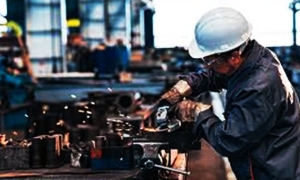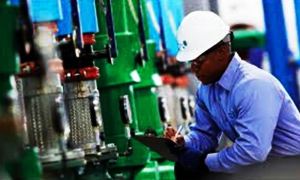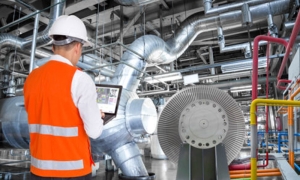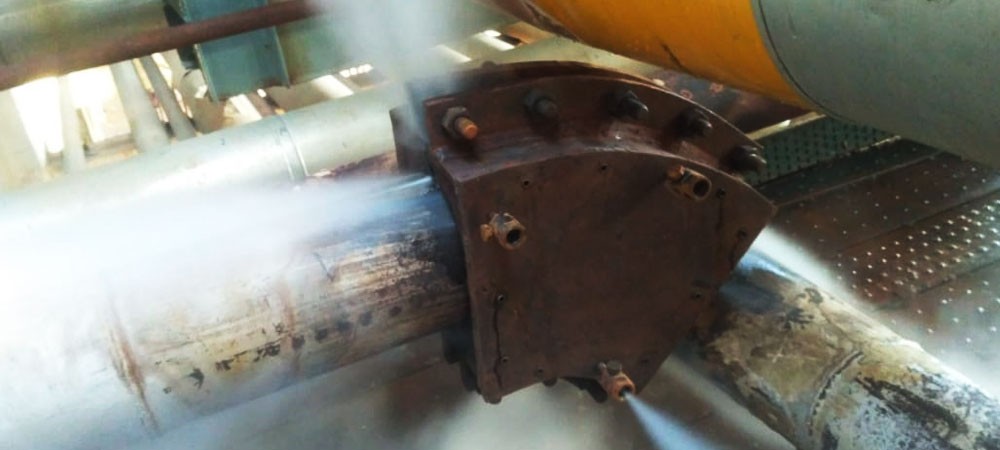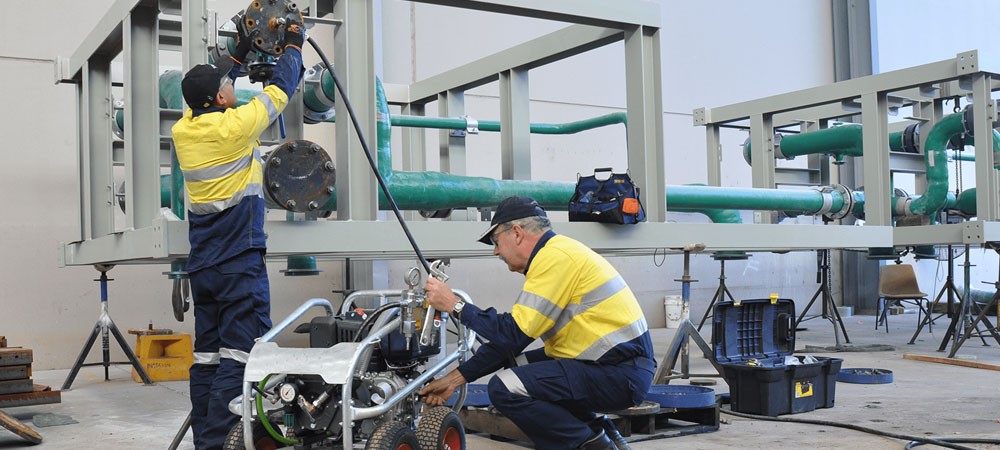Plant Maintenance

Plant Maintenance
Plant maintenance is the service and repair of assets and equipment. During normal operation, assets may accumulate wear and tear that needs to be addressed. Deviations outside of normal operation cause most of the damage to equipment and assets.
Plant maintenance includes scheduled and unscheduled maintenance. Plant maintenance may be scheduled according to the age of equipment or usage of equipment. Unscheduled plant maintenance can occur after equipment failure or operation excursions.
Plant maintenance can cause downtime due to process disruption and critical assets being taken offline for servicing. During plant maintenance, input supply chains may lose efficiency as assets are unable to process at their normal rate. The short-term reduction in profitability caused by process disruption, as well as the costs associated with servicing or repairs, often leads many companies to defer plant maintenance.
The purpose of this procedure is to establish a set of guidelines to assist projects in establishing minimum maintenance standards for suppliers of plant or equipment.
The maintenance philosophy behind this procedure is that plant maintenance is an essential function, all plants shall be maintained in clean, safe, and good working order, all plants shall be serviced when due, and that operations and maintenance shall work cooperatively to meet the common good.
All plant maintenance activities shall follow the relevant HSE Standards and work methods.
To perform effective planned or preventative maintenance work, a detailed maintenance and service schedule shall be prepared by the project plant coordinator. The plant shall be prepared in close cooperation with the project director and operations/engineering staff to maximize opportunities for maintenance whilst minimizing disruption by allowing the operation/engineering staff to recognize plant planning needs early and build them into their own operational schedules
Plant Maintenance Services
Plant maintenance usually refers to the methods, strategies, and practices used to keep an industrial factory running efficiently. This can include anything from regular checks of equipment to make sure they are functioning properly, to cleaning garbage bins and toilets. The general aim of plant maintenance is to create a productive working environment that is also safe for workers.
Since there are many different types of plants and factories, the ways to maintain these facilities often vary. For example, a steel mill will have different machinery than a food processing plant. This means that each place of business generally has its own maintenance plan, tailored to its particularities. A maintenance plan can include scheduling times for equipment checkups, troubleshooting, and general clean-up.
Most plants employ their own maintenance staff. This can include workers such as on-site engineers, whose job is to make sure that machines continue to operate effectively. This is especially important for plants that use equipment designed for assembly lines since a stoppage of the line can be financially damaging.
Reliability-centered maintenance (RCM) is a maintenance strategy that is often employed in factories. This is an approach that not only seeks to maintain minimal levels of plant efficiency but also looks for ways to improve production. RCM can include determining how to increase operating procedures, such as maximizing a machine's uptime, which means increasing the amount of time the equipment is actually producing. Such an increase can be accomplished by various means, like adding more workers to a machine or by making engineering changes.
Preventative maintenance is also an important aspect of making sure a plant runs efficiently. One common preventative measure is the periodic checking of machinery to see if it is operating correctly. This can prevent equipment from breaking down or help to anticipate a possible problem that would otherwise cost the plant money because of a work stoppage.
Janitors are an important part of plant maintenance. These maintenance technicians do not work directly with machines, but instead make sure that the plant facilities are clean and safe. This can include anything from removing garbage to cleaning bathrooms and eating areas. Many times, janitors will be responsible for the maintenance of the factory floor and keeping it clean of any spills that could be dangerous to equipment operators.
There are also many private plant maintenance companies. These firms are generally contracted by a factory to check equipment and make repairs. They can also perform tasks, such as corrosion prevention, acid-proofing, or repairing concrete floors.
Plant Maintenance Services
Maintenance Objectives
EMBARKS' target for maintenance activities is to add value by safely delivering fit-for-purpose Plant & Equipment to our customers which delivers reliable, value-for-money service, considering both the unit production costs and capital expenditure. In achieving this goal, it is imperative to have a predetermined maintenance plan emphasizing proactive rather than reactive actions for key production assets. This plan is to be clearly communicated to workers so they can understand their contribution to achieving it. EMBARK'S Plant Maintenance workers are required to have a clear understanding of their roles and responsibilities, with defect elimination and reliable equipment performance being a clear priority to all maintenance personnel.
Technical Maintenance Plans
Technical Maintenance Plans (TMP) will be developed and implemented for the various major equipment classes. These TMPs shall be in the format as shown in form EPP3202F-04 which details the complete life cycle maintenance needs and shall address (where relevant):
- Predicted life of equipment until economic to replace, undergoing a major refurbishment or planned disposal
- Service intervals, preventative maintenance tasks, scheduling frequency, and sequence
- Predictive maintenance tasks including proposed condition monitoring activities
- Component items identified as technically feasible and economically viable to be maintained on a condition-based predictive maintenance program
- Component items identified as most economically maintained on a preventative maintenance basis, and the frequency of that maintenance cycle, method of measurement of the cycle duration (e.g., operating hours, full load hours, calendar time, etc).
- Component items identified as most economically maintained on a breakdown or corrective maintenance basis
- Methods for the control and inspection of pressure vessels, lifting equipment, and other high-risk plants.
These TMPs will be developed according to guidelines and recommendations supplied by the Original Equipment Manufacturer (OEM) where available and may be optimized for local operating conditions through the relevant experience of competent persons. Where scheduled maintenance activities are identified, these will be directly implemented as Maintenance Scheduled Tasks (MSTs) in the Ellipse maintenance management system. All equipment and MST changes or additions in Ellipse are to be processed following the completion of an approved Change Authorization Form (CAF) as defined in configuration management procedure EGP-03-02 Equipment Register Updating and Maintenance. Technical Maintenance Plans and associated MSTs are to be reviewed at least biennially (every two years) to ensure currency.
Maintenance Improvement Projects
It is essential to plan and act on opportunities for maintenance improvement. As opportunities are identified, through poor cost-effectiveness or performance limitations, improvement options will be sourced and assessed to ensure ongoing issues are not inadvertently introduced by the proposed solution. Informally these assessment criteria may include:
- Cost and availability of alternate parts
- Reliability of supply
- Impact of the proposed change on other systems
- Need for fleet rollout to other like items of equipment
Plant Maintenance Services
Plant maintenance is the application of best practices to increase equipment uptime in manufacturing facilities. This helps plants avoid unplanned downtime and ensures production stays on schedule. Understanding plant maintenance will help ensure your employees are protected from injury and your products are safe for the end-user.
The 3 Types of Plant Maintenance
1. REACTIVE MAINTENANCE
This strategy performs repairs on equipment only after it has broken down. This is like the theory If it is broken, don't fix it. Maintaining your equipment this way will save money in the short term. However, it will cost you efficiency loss and premature failure in the long term.
2. PREVENTATIVE MAINTENANCE
Preventative plant maintenance utilizes timed intervals based on industry standards to maintain equipment with the goal of preventing it from breaking down. This involves systematic maintenance and ensures routine tasks like belt and filter changes are taken care of in a timely fashion.
3. PREDICTIVE MAINTENANCE
This refers to the maintenance strategies used to determine the current condition of in-service equipment. Based on the equipment's condition, a specific maintenance schedule is followed. This approach promotes a safe work environment because your equipment is continually monitored. This can reduce operating costs by 12-18% over time because maintenance tasks are performed only when warranted.
PLANT MAINTENANCE SERVICES
Maintenance of plant and equipment is carried out to prevent problems from arising, to put faults right, and to ensure equipment is working effectively.
Maintenance may be part of a planned program or may have to be carried out at short notice after a breakdown. It always involves non-routine activities and can expose those involved (and others) to a range of risks.
Why is the maintenance of plants and equipment important?
An effective maintenance program will make plants and equipment more reliable. Fewer breakdowns will mean less dangerous contact with the machinery required, as well as the cost benefits of better productivity and efficiency.
Additional hazards can occur when machinery becomes unreliable and develops faults. Maintenance allows these faults to be diagnosed early to manage any risks. However, maintenance needs to be correctly planned and carried out. Unsafe maintenance has caused many fatalities and serious injuries either during the maintenance or to those using badly maintained or wrongly maintained/repaired equipment.
How can I do it?Establishing a planned maintenance program may be a useful step towards reducing risk, as well as having a reporting procedure for workers who may notice problems while working on machinery.
Some items of plant and equipment may have safety-critical features where deterioration would cause a risk. You must have arrangements in place to make sure the necessary inspections take place.
But there are other steps to consider:
Before you start maintenance
- Decide if the work should be done by specialist contractors. Never take on work for which you are not prepared or competent
- Plan the work carefully before you start, ideally using the manufacturer's maintenance instructions, and produce a safe system of work. This will avoid unforeseen delays and reduce the risks
- Make sure maintenance staff are competent and have appropriate clothing and equipment
- Try and use downtime for maintenance. You can avoid the difficulties in co-ordinating maintenance and production work if maintenance work is performed before start-up or during shutdown periods
Safe working areas
- You must provide safe access and a safe place of work
- Don't just focus on the safety of maintenance workers take the necessary precautions to ensure the safety of others who may be affected by their work, eg other employees or contractors working nearby
- Set up signs and barriers and position people at key points if they are needed to keep other people out
Safe plant and equipment
Plant and equipment must be made safe before maintenance starts.Safe isolation
- Ensure the moving plant has stopped and isolate electrical and other power supplies. Most maintenance should be carried out with the power off. If the work is near uninsulated, overhead electrical conductors, eg close to overhead traveling cranes, cut the power off first
- Lock off machines if there is a chance the power could be accidentally switched back on
- Isolate plants and pipelines containing pressured fluid, gas, steam, or hazardous material. Lock off isolating valves Other factors you need to consider
- Release any stored energy, such as compressed air or hydraulic pressure that could cause the machine to move or cycle
- Support parts of the plant that could fall, eg support the blades of down-stroking bale cutters and guillotines with blocks
- Allow components that operate at high temperatures time to cool
- Place the mobile plant in neutral gear, apply the brake, and chock the wheels
- Safely clean out vessels containing flammable solids, liquids, gases, or dust, and check them before hot work is carried out to prevent explosions. You may need specialist help and advice to do this safely
- Avoid entering tanks and vessels where possible. This can be very high-risk work. If required, get specialist help to ensure adequate precautions are taken
- Clean and check vessels containing toxic materials before work starts
Dos and don'ts of plant and equipment maintenance Do.
- ensure maintenance is carried out by a competent person (someone who has the necessary skills, knowledge, and experience to carry out the work safely)
- maintain plant and equipment regularly use the manufacturer's maintenance instructions as a guide, particularly if there are safety-critical features
- have a procedure that allows workers to report damaged or faulty equipment
- provide the proper tools for the maintenance person
- schedule maintenance to minimize the risk to other workers and the maintenance person wherever possible
- make sure maintenance is done safely, that machines and moving parts are isolated or locked and that flammable/explosive/toxic materials are dealt with properly
Don't.
- ignore maintenance
- ignore reports of damaged or unsafe equipment
- use faulty or damaged equipment
